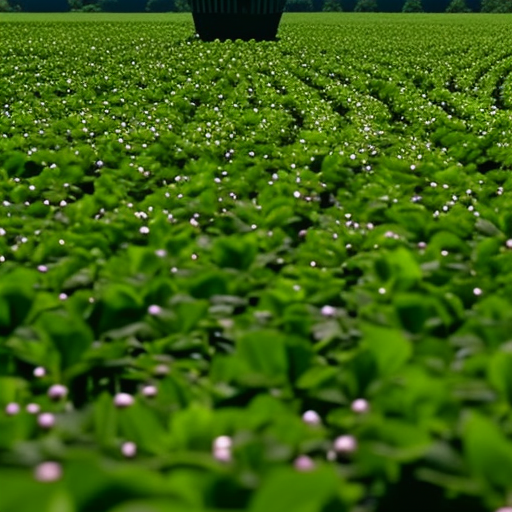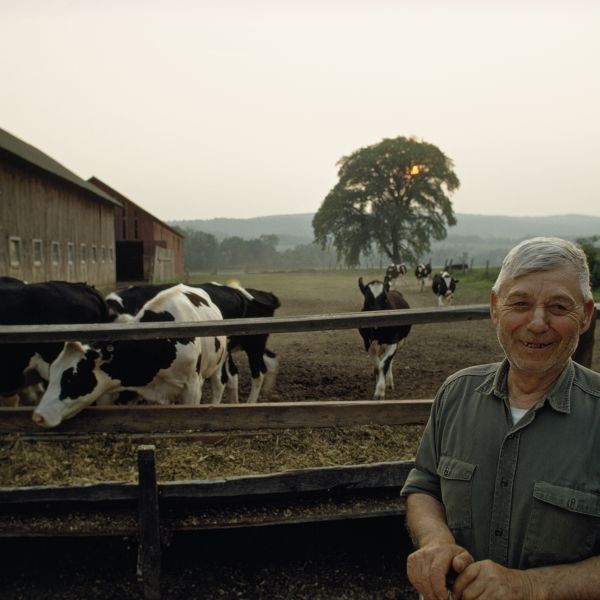
The Farming Revolution

The Farming Revolution
Taking root around 12,000 years ago, agriculture triggered such a change in society and the way in which people lived that its development has been dubbed the “Neolithic Revolution.” Traditional hunter-gatherer lifestyles, followed by humans since their evolution, were swept aside in favor of permanent settlements and a reliable food supply. Out of agriculture, cities and civilizations grew, and because crops and animals could now be farmed to meet demand, the global population rocketed—from some five million people 10,000 years ago, to eight billion today.
Sustainable Development Goals (SDGs)
- No Poverty
- Zero Hunger
- Good Health and Well-being
- Quality Education
- Gender Equality
- Clean Water and Sanitation
- Affordable and Clean Energy
- Decent Work and Economic Growth
- Industry, Innovation, and Infrastructure
- Reduced Inequalities
- Sustainable Cities and Communities
- Responsible Consumption and Production
- Climate Action
- Life Below Water
- Life on Land
- Peace, Justice, and Strong Institutions
- Partnerships for the Goals
Plant Domestication
Plant Domestication
The wild progenitors of crops including wheat (Triticum aestivum), barley (Hordeum vulgare), and peas (Lathyrus oleraceus) are traced to the Near East region. Cereals were grown in Syria as long as 9,000 years ago, while figs (Ficus carica) were cultivated even earlier; prehistoric seedless fruits discovered in the Jordan Valley suggest fig trees were being planted some 11,300 years ago. Though the transition from wild harvesting was gradual, the switch from a nomadic to a settled way of life is marked by the appearance of early Neolithic villages with homes equipped with grinding stones for processing grain.
The origins of rice and millet farming date to the same Neolithic period in China. The world’s oldest known rice paddy fields, discovered in eastern China in 2007, reveal evidence of ancient cultivation techniques such as flood and fire control.
In Mexico, squash cultivation began around 10,000 years ago, but corn (maize) had to wait for natural genetic mutations to be selected for in its wild ancestor, teosinte. While maize-like plants derived from teosinte appear to have been cultivated at least 9,000 years ago, the first directly dated corn cob dates only to around 5,500 years ago.
Corn later reached North America, where cultivated sunflowers (Helianthus annuus) also started to bloom some 5,000 years ago. This is also when potato (Solanum tuberosum) growing in the Andes region of South America began.
Farmed Animals
Farmed Animals
Cattle (Bos taurus), goats (Capra hircus), sheep (Ovis aries), and pigs (Sus domesticus) all have their origins as farmed animals in the so-called Fertile Crescent, a region covering eastern Turkey, Iraq, and southwestern Iran. This region kick-started the Neolithic Revolution. Dates for the domestication of these animals range from between 13,000 to 10,000 years ago.
Genetic studies show that goats and other livestock accompanied the westward spread of agriculture into Europe, helping to revolutionize Stone Age society. While the extent to which farmers themselves migrated west remains a subject of debate, the dramatic impact of dairy farming on Europeans is clearly stamped in their DNA. Prior to the arrival of domestic cattle in Europe, prehistoric populations weren’t able to stomach raw cow milk. But at some point during the spread of farming into southeastern Europe, a mutation occurred for lactose tolerance that increased in frequency through natural selection thanks to the nourishing benefits of milk. Judging from the prevalence of the milk-drinking gene in Europeans today—as high as 90 percent in populations of northern countries such as Sweden—the vast majority are descended from cow herders.
SDGs, Targets, and Indicators Analysis
1. Which SDGs are addressed or connected to the issues highlighted in the article?
- SDG 2: Zero Hunger
- SDG 11: Sustainable Cities and Communities
- SDG 12: Responsible Consumption and Production
- SDG 13: Climate Action
- SDG 15: Life on Land
The article discusses the development of agriculture and its impact on society, population growth, and the domestication of plants and animals. These topics are connected to several SDGs, including SDG 2 (Zero Hunger), which aims to ensure food security and promote sustainable agriculture. The article also touches on the growth of cities and civilizations, which relates to SDG 11 (Sustainable Cities and Communities). Additionally, the article mentions the transition from wild harvesting to settled farming, which is relevant to SDG 12 (Responsible Consumption and Production). The article also briefly mentions climatic changes and natural genetic mutations, which are connected to SDG 13 (Climate Action) and SDG 15 (Life on Land) respectively.
2. What specific targets under those SDGs can be identified based on the article’s content?
- SDG 2.4: By 2030, ensure sustainable food production systems and implement resilient agricultural practices that increase productivity and production.
- SDG 11.3: By 2030, enhance inclusive and sustainable urbanization and capacity for participatory, integrated, and sustainable human settlement planning and management in all countries.
- SDG 12.3: By 2030, halve per capita global food waste at the retail and consumer levels and reduce food losses along production and supply chains, including post-harvest losses.
- SDG 13.1: Strengthen resilience and adaptive capacity to climate-related hazards and natural disasters in all countries.
- SDG 15.5: Take urgent and significant action to reduce the degradation of natural habitats, halt the loss of biodiversity, and protect and prevent the extinction of threatened species.
Based on the article’s content, the specific targets under the identified SDGs can be inferred. For SDG 2, the target is to ensure sustainable food production systems and resilient agricultural practices. SDG 11 focuses on enhancing sustainable urbanization and human settlement planning. SDG 12 aims to reduce food waste and losses along production and supply chains. SDG 13 targets strengthening resilience to climate-related hazards. Lastly, SDG 15 aims to take action to reduce habitat degradation, biodiversity loss, and protect threatened species.
3. Are there any indicators mentioned or implied in the article that can be used to measure progress towards the identified targets?
- Indicator for SDG 2.4: Proportion of agricultural area under productive and sustainable agriculture.
- Indicator for SDG 11.3: Proportion of cities with a direct participation structure of civil society in urban planning and management that operate regularly and democratically.
- Indicator for SDG 12.3: Food loss index.
- Indicator for SDG 13.1: Number of deaths, missing persons, and directly affected persons attributed to disasters per 100,000 population.
- Indicator for SDG 15.5: Red List Index.
The article does not explicitly mention indicators, but based on the identified targets, indicators can be selected to measure progress. For SDG 2.4, the indicator can be the proportion of agricultural area under productive and sustainable agriculture. SDG 11.3 can be measured by the proportion of cities with a direct participation structure of civil society in urban planning and management. The food loss index can be used as an indicator for SDG 12.3. The number of deaths, missing persons, and directly affected persons attributed to disasters per 100,000 population can be an indicator for SDG 13.1. Lastly, the Red List Index can measure progress towards SDG 15.5.
4. Table: SDGs, Targets, and Indicators
| SDGs | Targets | Indicators |
|---|---|---|
| SDG 2: Zero Hunger | 2.4: By 2030, ensure sustainable food production systems and implement resilient agricultural practices that increase productivity and production. | Proportion of agricultural area under productive and sustainable agriculture. |
| SDG 11: Sustainable Cities and Communities | 11.3: By 2030, enhance inclusive and sustainable urbanization and capacity for participatory, integrated, and sustainable human settlement planning and management in all countries. | Proportion of cities with a direct participation structure of civil society in urban planning and management that operate regularly and democratically. |
| SDG 12: Responsible Consumption and Production | 12.3: By 2030, halve per capita global food waste at the retail and consumer levels and reduce food losses along production and supply chains, including post-harvest losses. | Food loss index. |
| SDG 13: Climate Action | 13.1: Strengthen resilience and adaptive capacity to climate-related hazards and natural disasters in all countries. | Number of deaths, missing persons, and directly affected persons attributed to disasters per 100,000 population. |
| SDG 15: Life on Land | 15.5: Take urgent and significant action to reduce the degradation of natural habitats, halt the loss of biodiversity, and protect and prevent the extinction of threatened species. | Red List Index. |
Behold! This splendid article springs forth from the wellspring of knowledge, shaped by a wondrous proprietary AI technology that delved into a vast ocean of data, illuminating the path towards the Sustainable Development Goals. Remember that all rights are reserved by SDG Investors LLC, empowering us to champion progress together.
Source: nationalgeographic.org

Join us, as fellow seekers of change, on a transformative journey at https://sdgtalks.ai/welcome, where you can become a member and actively contribute to shaping a brighter future.





